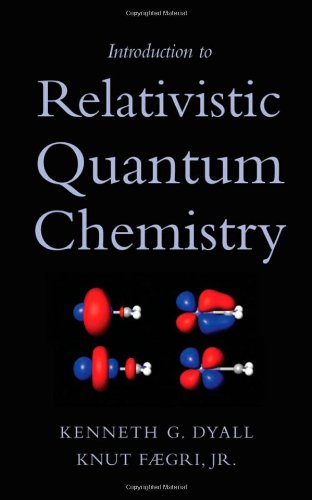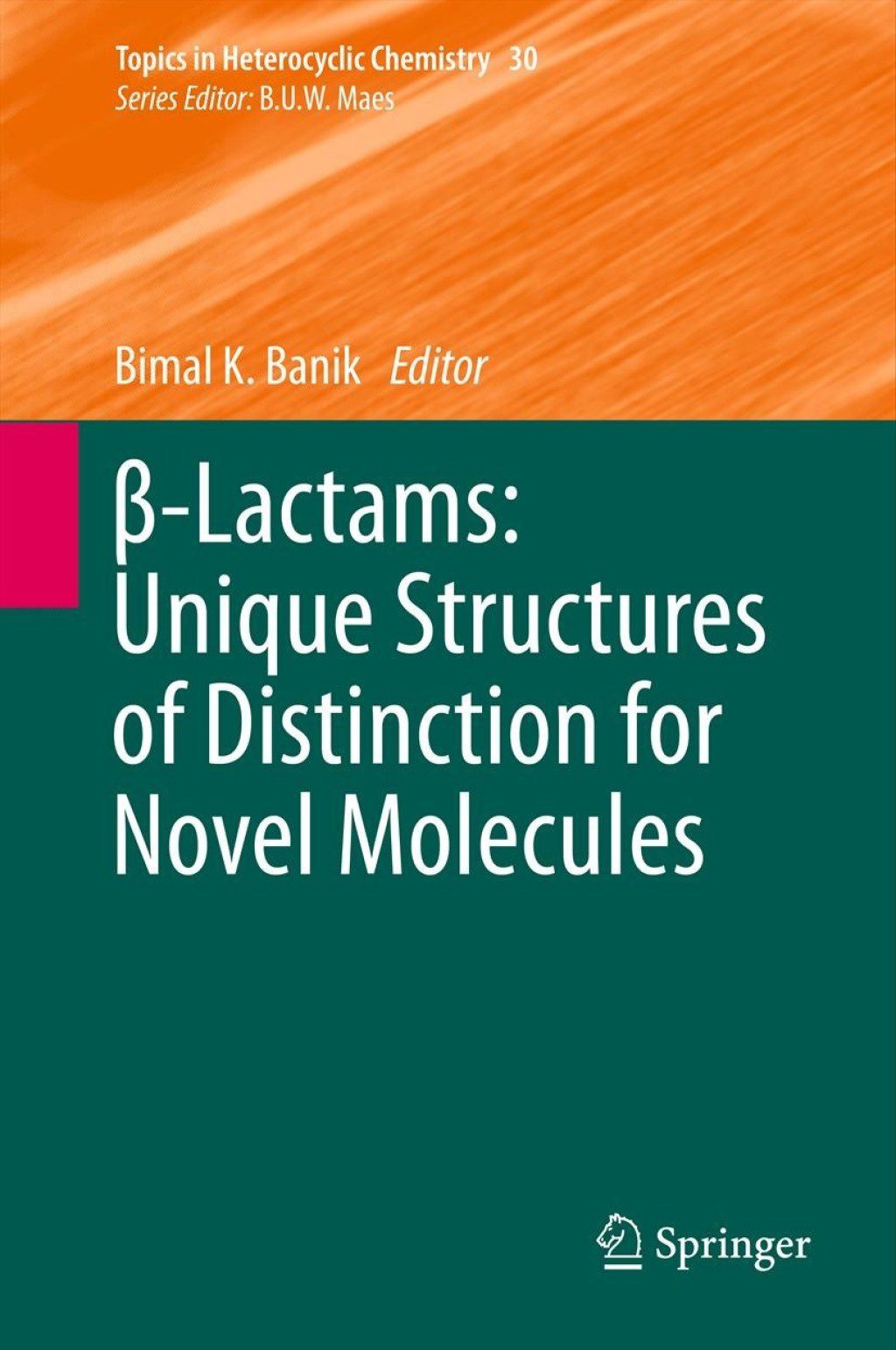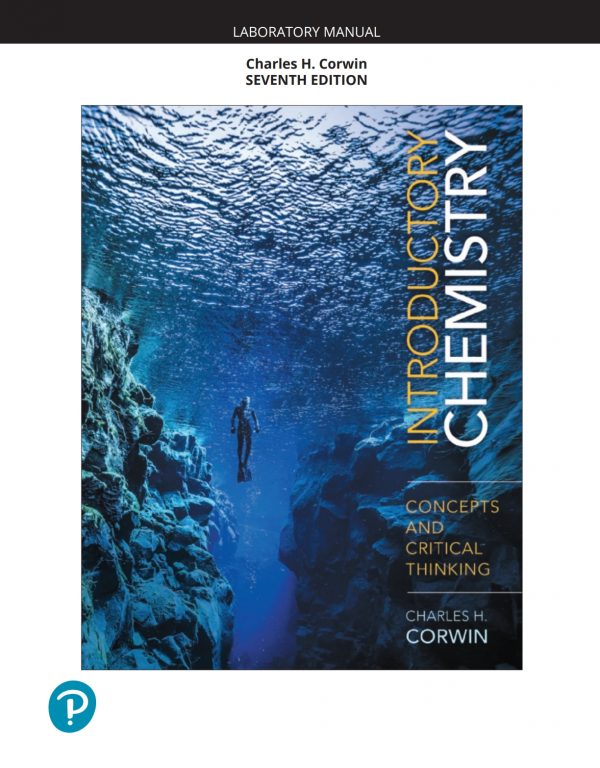Kenneth G. Dyall, Knut Faegri Jr.0195140869, 9780195140866, 9781429486156
Table of contents :
Contents……Page 10
Notation Conventions……Page 8
I: Foundations……Page 16
1 Introduction……Page 18
2.1 Inertial Frames and Newtonian Mechanics……Page 21
2.2 Relativistic Coordinate Transformations……Page 22
2.3 Transformation of Lengths and Relativistic Invariants……Page 24
2.4 Transformation of Velocities……Page 26
2.5 Transformation of Mass……Page 28
2.6 Relativistic Energy……Page 29
2.7 Relativistic Momentum……Page 30
3 Relativistic Electromagnetic Interactions……Page 32
3.1 The Maxwell Equations……Page 33
3.2 Potentials and Gauge Transformations……Page 34
3.3 The Relativistic Potential from a Moving Charge……Page 37
3.4 The Potential Experienced by a Moving Charge……Page 39
3.5 The Interaction of Two Charged Particles……Page 41
II: The Dirac Equation: Solutions and Properties……Page 48
4 The Dirac Equation……Page 50
4.1 Quantization of the Nonrelativistic Hamiltonian……Page 51
4.2 Spin in the Nonrelativistic Hamiltonian……Page 52
4.3 The Dirac Equation……Page 54
4.4 The Time-Independent Dirac Equation……Page 59
4.5 The Dirac Wave Function……Page 60
4.6 Nonrelativistic Limit of the Dirac Equation……Page 64
5 Negative-Energy States and Quantum Electrodynamics……Page 69
5.1 Second Quantization……Page 72
5.2 Relativistic Second-Quantized Hamiltonians……Page 74
5.3 Definition of the Vacuum……Page 77
5.4 The Electron–Electron Interaction……Page 79
5.5 The Lamb Shift……Page 83
6 Relativistic Symmetry……Page 85
6.1 The Symmetry of the Relativistic One-Electron Atom……Page 86
6.2 Double Groups……Page 88
6.3 Spin and the SU(2) Group……Page 92
6.4 Spatial Rotations and the SO(3) Group……Page 95
6.5 Transformation of Operators……Page 99
6.6 Transformation of the Dirac Equation under SU(2) and SO(3)……Page 101
6.7 Space Inversion……Page 104
6.8 Reflections and Rotation–Inversions……Page 106
6.9 Time Reversal……Page 107
6.10 Lorentz Transformations and the Lorentz Group……Page 112
7.1 Separation of Variables in the Dirac Equation……Page 115
7.2 Angular Wave Functions……Page 118
7.3 Solutions of the Radial Dirac Equation……Page 121
7.4 Behavior at Large r……Page 126
7.5 Behavior at Small r……Page 127
7.6 Nuclear Models……Page 130
8 Properties of Relativistic Mean-Field Theory……Page 133
8.1 Mean-Field Formalism in Second Quantization……Page 134
8.2 Structure of the Spinor Rotation Operator……Page 140
8.3 Relativistic Stationarity Conditions……Page 143
8.4 Projection and Bounds……Page 145
8.5 Many-Electron Theory……Page 146
III: Four-Component Methodology……Page 148
9 Operators, Matrix Elements, and Wave Functions under Time-Reversal Symmetry……Page 150
9.1 Time Reversal and Kramers-Restricted Representation of Operators……Page 151
9.2 Matrix Elements under Time Reversal……Page 157
9.3 Many-Particle States and Time Reversal……Page 159
10.1 Time-Reversal and Point-Group Symmetry……Page 163
10.2 Time-Reversal Symmetry and Matrix Block Structure……Page 167
10.3 Symmetry of Spinor Components……Page 172
10.4 Symmetries of Two-Particle States……Page 177
10.5 Matrix Elements and Symmetry……Page 181
10.6 Time Reversal and Symmetry in the Many-Electron Hamiltonian……Page 184
11 Basis-Set Expansions of Relativistic Electronic Wave Functions……Page 189
11.1 The Dirac Equation in 2-Spinor Form……Page 190
11.2 Kinetic Balance……Page 191
11.3 Variational Bounds……Page 193
11.4 Matrix Dirac–Hartree–Fock Equations in a 2-Spinor Basis……Page 196
11.5 Kramers-Restricted 2-Spinor Matrix Dirac–Hartree–Fock Equations……Page 199
11.6 Symmetry in the Kramers-Restricted Fock Matrix……Page 202
11.7 Kramers-Restricted Open-Shell Methods……Page 204
11.8 Expansion in Scalar Basis Sets……Page 207
11.9 Basis Set Choice and Design……Page 213
11.10 Comparison of Nonrelativistic and Relativistic SCF Methods……Page 219
12 Correlation Methods……Page 222
12.1 The Reference State……Page 223
12.2 The No-Pair Approximation……Page 225
12.3 Integral Transformations……Page 226
12.4 Kramers-Restricted Møller–Plesset Perturbation Theory……Page 228
12.5 Kramers-Restricted Coupled-Cluster Expansions……Page 231
12.6 Open-Shell Kramers-Restricted Coupled-Cluster Expansions……Page 234
12.7 Configuration Interaction Expansions……Page 236
12.8 The Cost of Configuration Interaction Methods……Page 242
12.9 Relativistic Multiconfiguration Self-Consistent Field Theory……Page 243
13 Molecular Properties……Page 248
13.1 Intrinsic Properties……Page 249
13.2 Electric Properties……Page 252
13.3 Gauge Invariance and Finite Basis Sets……Page 254
13.4 Magnetic Properties……Page 257
13.5 Second-Order Properties……Page 260
13.6 NMR Parameters……Page 263
13.7 Alternative Treatment of Magnetic Interactions……Page 265
13.8 Finite Nucleus Effects on Properties……Page 267
13.9 Parity-Violating Interactions……Page 270
14 Density Functional Approaches to Relativistic Quantum Mechanics……Page 276
14.1 A Brief Review of Nonrelativistic Density Functional Theory……Page 277
14.2 The Local Density and Local Exchange Approximations……Page 281
14.3 The Hohenberg–Kohn Theorem for Relativistic N-Particle Systems……Page 283
14.4 Density Functional Theory and the Dirac–Coulomb Hamiltonian……Page 285
IV: Approximations to the Dirac Equation……Page 290
15 Spin Separation and the Modified Dirac Equation……Page 292
15.1 The Modified Dirac Equation……Page 293
15.2 Solutions of the Spin-Free Modified Dirac Equation……Page 296
15.3 Modified One-Electron Operators……Page 299
15.4 Modified Two-Electron Operators……Page 302
15.5 Practical Implications of Spin Separation……Page 306
16 Unitary Transformations of the Dirac Hamiltonian……Page 310
16.1 The Foldy–Wouthuysen Transformation……Page 311
16.2 Approximate Foldy–Wouthuysen Transformations……Page 314
16.3 The Douglas–Kroll Transformation……Page 317
16.4 Two-Electron Terms and the Douglas–Kroll–Hess Approximation……Page 323
16.5 Implementation of the Douglas–Kroll Transformation……Page 324
16.6 The Barysz–Sadlej–Snijders Transformation……Page 326
16.7 Transformation of Electric Property Operators……Page 328
16.8 Transformation of Magnetic Property Operators……Page 332
17 Perturbation Methods……Page 337
17.1 The Pauli Hamiltonian……Page 338
17.2 The Breit–Pauli Hamiltonian……Page 342
17.3 Perturbative Treatment of the Lamb Shift……Page 346
17.4 Multiple Perturbation Theory for Many-Electron Systems and Properties……Page 348
17.5 Direct Perturbation Theory……Page 351
17.6 Stationary Direct Perturbation Theory……Page 356
17.7 Stationary Direct Perturbation Theory for Many-Electron Systems……Page 362
17.8 Direct Perturbation Theory of Properties……Page 365
18 Regular Approximations……Page 371
18.1 The CPD or ZORA Hamiltonian……Page 372
18.2 Perturbative Corrections to the ZORA Hamiltonian……Page 377
18.3 Nonperturbative Improvements of the ZORA Equation……Page 381
18.4 Many-Electron Systems……Page 386
18.5 Properties in the Regular Approximations……Page 392
19 Matrix Approximations……Page 396
19.1 The Matrix Elimination of the Small Components……Page 397
19.2 Properties of the NESC and UESC Equations……Page 400
19.3 Inclusion of the Two-Electron Terms……Page 403
19.4 Atom-Centered Approximations……Page 406
19.5 Properties in the Matrix Approximations……Page 409
20 Core Approximations……Page 411
20.1 The Frozen-Core Approximation……Page 413
20.2 The Generalized Philips–Kleinman Pseudopotential……Page 416
20.3 Shape-Consistent Pseudospinors and Pseudopotentials……Page 421
20.4 Energetics of Pseudopotentials……Page 424
20.5 Generation of Pseudopotentials……Page 428
20.6 Relativistic Effects in Pseudopotentials……Page 430
20.7 Model Potentials……Page 433
20.8 Energetics of Model Potentials……Page 435
20.9 Model Potential Implementation……Page 438
20.10 Relativistic Effects in Model Potentials……Page 439
20.11 Properties and Core Approximations……Page 440
21 Spin–Orbit Configuration Interaction Methods……Page 442
21.1 Breit–Pauli Spin–Orbit Operators……Page 443
21.2 Douglas–Kroll-Transformed Spin–Orbit Operators……Page 446
21.3 Spin–Orbit Operators for Model Potential and Pseudopotential Methods……Page 449
21.4 Mean-Field Approximations for Spin–Orbit Interaction……Page 450
21.5 Strategies for Spin–Orbit Methods……Page 454
21.6 One-Particle and N-Particle Expansion Spaces……Page 456
21.7 One-Step Methods……Page 457
21.8 Two-Step Methods……Page 461
V: The Nature of the Relativistic Chemical Bond……Page 466
22.1 Relativistic Effects on Atomic Shell Structure……Page 468
22.2 Spin-Free Effects on Molecular Structure……Page 471
22.3 Spinor Bonds in Diatomic Molecules……Page 476
22.4 Hybridization and Bonding in Polyatomic Molecules……Page 480
22.5 Relativistic Effects on Properties……Page 482
22.6 A Final Warning……Page 485
Appendices……Page 486
Appendix A: Four-Vector Quantities……Page 488
Appendix B: Vector Relations……Page 489
Appendix C: Elements of Group Theory……Page 491
Appendix D: Group Tables……Page 494
Appendix E: Change of Metric for Modified Wave Functions……Page 498
Appendix F: Two-Electron Gauge Terms for the Modified Dirac Operator……Page 501
Appendix G: The Second-Order Term of the Douglas–Kroll Expansion……Page 504
Appendix H: Transformed Operators for Electric and Magnetic Properties……Page 506
Appendix I: Gauge Term Contributions from the Breit Interaction to the Breit–Pauli Hamiltonian……Page 510
Appendix J: Approximations in Relativistic Density Functional Theory……Page 513
Appendix K: The Cowan–Griffin and Wood–Boring Equations……Page 516
Appendix L: Supplementary Reading……Page 518
Bibliography……Page 522
B……Page 530
C……Page 531
D……Page 532
E……Page 533
G……Page 534
I……Page 535
L……Page 536
M……Page 537
O……Page 538
P……Page 540
R……Page 541
S……Page 542
V……Page 544
Z……Page 545







Reviews
There are no reviews yet.